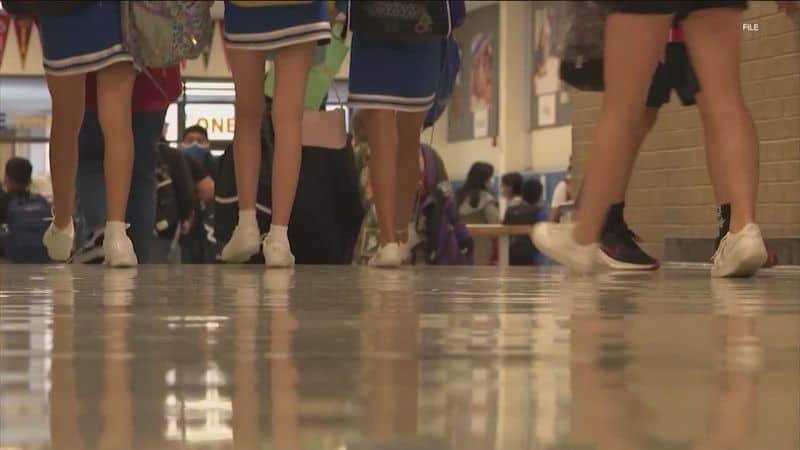The 1970s were a time of change and experimentation, but some school rules from that era would seem outrageous in today’s world. Back then, educational environments were steeped in tradition and authority, often imposing rules that would raise eyebrows now. The cultural and social norms of the time influenced many of these rules, which were accepted without question.
Today, however, they would be scrutinized and likely rejected, as they conflict with modern values of equality, individuality, and freedom of expression. Let’s explore eight such rules that would be considered problematic in the contemporary educational landscape.
1. Gender-Specific Dress Codes

During the 1970s, many schools enforced strict gender-specific dress codes. Girls were often required to wear skirts or dresses, while boys had to wear pants. This rule reinforced traditional gender roles and limited personal expression. In today’s world, such a rule would be seen as discriminatory and outdated. Schools now embrace more inclusive policies, allowing students to dress in ways that reflect their identity. This shift promotes a more accepting and diverse environment, where individuality is celebrated. An inclusive dress code helps to break down gender stereotypes and encourages equality among students.
2. Corporal Punishment

Corporal punishment was commonly used in schools during the 1970s as a means of maintaining discipline. Teachers and administrators were allowed to use physical force, such as paddling, to correct misbehavior. Today, such practices are largely banned and considered abusive. Modern educational systems focus on positive discipline techniques that encourage understanding and empathy. The shift away from corporal punishment reflects a broader societal change towards respecting children’s rights and promoting safer, more supportive learning environments. This change underscores the importance of nurturing rather than punishing young minds.
3. Mandatory Pledge of Allegiance

In the 1970s, it was common for schools to require students to recite the Pledge of Allegiance daily. This practice was seen as a way to instill patriotism and unity. However, mandatory participation raised issues of freedom of speech and religious beliefs. In today’s diverse society, forcing students to participate in such rituals would be controversial. Many schools now allow students to opt out, respecting individual beliefs and cultural differences. The focus has shifted towards fostering a sense of community without infringing on personal freedoms. This change reflects a broader acceptance of diversity and individuality.
4. Segregated Extracurricular Activities

Extracurricular activities in the 1970s were often segregated by gender. Boys and girls participated in separate sports teams and clubs, reflecting societal norms of the time. Today, such segregation would be considered discriminatory, as schools strive for inclusivity and equality. Coeducational activities are now the norm, allowing students of all genders to collaborate and compete together. This shift promotes teamwork, understanding, and mutual respect among students. By breaking down barriers, schools create a more integrated and harmonious environment that values every student’s potential, regardless of gender.
5. Limited Special Education Services

In the 1970s, special education services were minimal, and students with disabilities often faced significant challenges. Many schools lacked the resources and trained staff to support these students effectively. Today, there is a strong emphasis on providing inclusive education and tailored support for all learners. Laws and policies have been established to ensure equal opportunities and access to education for students with disabilities. This change reflects a commitment to diversity and the belief that every student deserves the chance to succeed. Modern schools prioritize inclusive practices, fostering an environment where all students can thrive.
6. Compulsory Home Economics for Girls

Home economics classes in the 1970s were often compulsory for girls, reinforcing traditional gender roles that focused on domestic skills. Boys, meanwhile, were steered towards subjects like shop class. Today, such gender-specific courses are seen as limiting and outdated. Modern education systems promote a more balanced curriculum, encouraging all students to explore a range of subjects. This approach fosters equality and allows students to pursue their interests without gender-based restrictions. By offering diverse learning opportunities, schools help students develop a wide array of skills that are applicable in today’s world, regardless of gender.
7. Prohibition of Long Hair for Boys

Many schools in the 1970s enforced strict grooming standards, including prohibiting boys from having long hair. This rule was rooted in maintaining discipline and conformity. In today’s world, such restrictions are viewed as an infringement on personal freedom. Modern educational environments support self-expression and individuality, allowing students to choose their hairstyles without fear of punishment. This shift highlights the importance of respecting students’ rights to express themselves. By embracing diversity in appearance, schools foster a more accepting and open-minded community, where students are encouraged to be themselves.
8. Discriminatory Language Policies

In the 1970s, many schools had English-only policies, discouraging the use of other languages. This rule marginalized non-English-speaking students and limited cultural expression. Today, such policies are seen as discriminatory and counterproductive. Schools now celebrate linguistic diversity, recognizing the value of multilingualism in a globalized world. Language programs and bilingual education are widely promoted, helping students maintain their cultural identities while learning new skills. This inclusive approach enriches the educational experience and prepares students for a multicultural society. By valuing all languages, schools promote respect and understanding among diverse communities.

Well, hello there!
My name is Jennifer. Besides being an orthodontist, I am a mother to 3 playful boys. In this motherhood journey, I can say I will never know everything. That’s why I always strive to read a lot, and that’s why I started writing about all the smithereens I came across so that you can have everything in one place! Enjoy and stay positive; you’ve got this!

